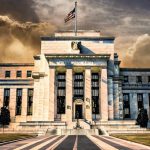
How to Identify Trend Changes in the Stock Market: A Focused Approach
Apr 11, 2025
Intro: The Herd’s Abyss: The Catastrophic Cost of Market Panic
Fear is the darkest force in the stock market, an invisible predator lurking just beneath the surface, waiting for collective panic to unleash chaos. History repeatedly proves that when investors succumb to the herd mentality, rational thought disintegrates into blind fear, triggering devastating sell-offs. From the 1929 Great Crash to Black Monday of 1987, fear-driven herd behavior has consistently demolished fortunes built over generations. Investors, hypnotized by panic, rush toward exits en masse, oblivious to the catastrophic consequences. Yet, paradoxically, within these moments of intense fear lie profound opportunities. To seize them, one must master the art and science of market perception—learning precisely how to identify trend changes in stock market dynamics.
Indeed, markets are not merely economic entities—they are multidimensional constructs, shaped by intricate, nonlinear interplays between psychology, economics, and even physics. Like chaotic systems described by quantum physics, markets fluctuate between predictable patterns and unforeseeable anomalies. Investors who grasp this complexity, who can identify the precise moments when trends fracture and reverse, position themselves to capitalize upon the irrationality of others. Instead of harnessing it to their advantage, they refuse to be consumed by panic. But mastering such discernment demands rigorous understanding of both economic fundamentals and the deep psychological currents beneath market movements.
Exposing Market Panic: The Psychology Behind Herd Behavior
At the core of every market crash lies a timeless psychological truth: investors fear loss far more intensely than they desire gain. Behavioral economics reveals cognitive biases—loss aversion, anchoring, confirmation bias—that distort decision-making during periods of uncertainty. The herd instinct, deeply embedded in human psychology since prehistoric times, compels individuals toward conformity as a survival mechanism. But in financial markets, this instinct turns disastrous. Investors collectively flee assets at precisely the wrong moments, amplifying market downturns into catastrophic collapses.
Historical examples vividly illustrate this destructive force. In the 2008 Financial Crisis, fear spiraled through Wall Street, forcing panicked sell-offs that decimated major financial institutions overnight. Similarly, during the COVID-19 market crash of March 2020, investors’ blind panic caused one of the steepest declines in history—wiping out trillions in wealth within weeks. Yet, in both instances, markets eventually rebounded sharply, rewarding those who recognized the irrationality of herd panic and identified the precise moment of trend reversal.
Understanding how to identify trend change in stock market scenarios requires acknowledging these deep-rooted psychological patterns. Investors must cultivate emotional resilience, viewing panic not as a threat but as an exploitable anomaly.
Contrarian Mastery: Seizing Opportunities Amidst Fear
Legendary investors consistently demonstrate the immense profitability of contrarian thinking. Warren Buffett famously advises to “be fearful when others are greedy, and greedy when others are fearful.” Charles Munger and Jesse Livermore likewise built fortunes by defying herd mentality, meticulously analyzing market extremes and capitalizing upon collective irrationality. These investors recognize that fear-driven sell-offs invariably push asset prices far below intrinsic values, creating rare opportunities to acquire exceptional investments at massive discounts.
For instance, Buffett aggressively acquired blue-chip companies like Goldman Sachs during the depths of 2008, understanding clearly that the market panic was temporary, not structural. Similarly, Livermore shorted overvalued stocks during the speculative frenzy preceding the 1929 crash, correctly anticipating the inevitable reversal. Their success hinged upon disciplined analysis and emotional fortitude—careful calculation, not reckless optimism.
Contrarian mastery demands precision. It is not enough to merely sense panic; one must analytically discern exactly how to identify trend change in stock market movements before acting. This requires rigorous analysis of economic fundamentals, technical indicators, and psychological sentiment—integrating diverse data streams into a coherent, actionable insight.
Fear-Exploiting Strategies: Turning Volatility into Profit
Strategically exploiting market panic requires advanced tactics tailored to volatility spikes. One potent technique involves selling put options during periods of extreme fear. When panic peaks, implied volatility skyrockets—dramatically inflating option premiums. Savvy investors seize these inflated premiums by selling puts on fundamentally sound companies, effectively monetizing collective panic.
Consider the COVID-induced volatility spike in March 2020. Investors who sold puts on robust companies like Apple or Microsoft captured extremely high premiums, betting that panic-driven declines would quickly reverse. These collected premiums could then be reinvested into long-term equity anticipation securities (LEAPS)—long-dated call options providing leveraged exposure to subsequent market recoveries. This strategy transformed short-term volatility into long-term wealth multiplication, exemplifying how disciplined analysis of volatility patterns enables precise identification of trend reversals.
However, such strategies require meticulous preparation. Reckless speculation during volatility spikes can devastate portfolios; disciplined boldness demands rigorous homework, emotional control, and refined analytical skills. Investors must methodically study historical volatility patterns, option pricing dynamics, and economic fundamentals—integrating psychological insights to precisely pinpoint how to identify trend change in stock market conditions.
Disciplined Boldness: Planning for Market Extremes
Effective contrarian investing demands disciplined boldness—the willingness to act decisively when market psychology reaches irrational extremes. But boldness alone is insufficient; it must be anchored in meticulous planning. Investors should predefine clear entry and exit parameters, strictly controlling risk through diversification and position sizing. Emotional discipline proves equally crucial, enabling investors to withstand temporary losses or volatility fluctuations without succumbing to panic themselves.
Consider again Buffett’s actions in 2008. His bold investments in Goldman Sachs and Bank of America were not impulsive gambles; rather, they followed careful analysis of financial statements, liquidity positions, and intrinsic valuations. Buffett had predefined criteria for identifying trend reversals, allowing confident action precisely when fear peaked.
Discipline also entails acknowledging paradoxical truths: markets are simultaneously rational and irrational, predictable yet chaotic. Investors must analyze trends as complex systems exhibiting emergent properties—where collective psychology, economic fundamentals, and technical indicators interact dynamically. Mastering this complexity demands both intellectual humility and analytical rigor, enabling precise identification of trend inflections amidst market chaos.
Visionary Empowerment: Escaping Herd Mentality for Financial Freedom
Mastering precisely how to identify trend change in stock market dynamics empowers investors not merely financially, but intellectually and emotionally. Escaping herd mentality liberates individuals from collective irrationality, granting autonomy over financial destinies. Investors who master contrarian analysis gain profound understanding of markets as multidimensional systems, where economic, psychological, and technical factors intertwine intricately.
Moreover, visionary investors recognize that financial markets reflect broader truths about human nature itself. Understanding how fear and greed drive collective behavior yields deeper self-awareness, emotional intelligence, and personal empowerment. Investing becomes not merely a financial pursuit but a philosophical journey—revealing profound insights about risk, uncertainty, and human psychology.
Ultimately, the art of identifying trend reversals transcends mere technical skill—it embodies a philosophical commitment to independent thought, rigorous analysis, and disciplined boldness. Investors who cultivate this mastery escape the tyranny of herd fear, transforming market panic into extraordinary opportunities. They embody visionary contrarianism, harnessing complexity rather than fleeing from it. Within this enlightened perspective lies true financial freedom—the power to profit precisely when others panic.
In the end, the market rewards not merely those who follow trends but those who master precisely how to identify trend changes in stock market movements. They soar above the herd, turning panic into opportunity, chaos into clarity, and fear into fortune.










